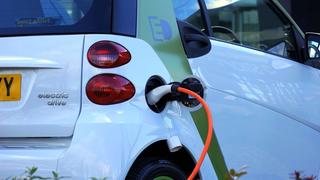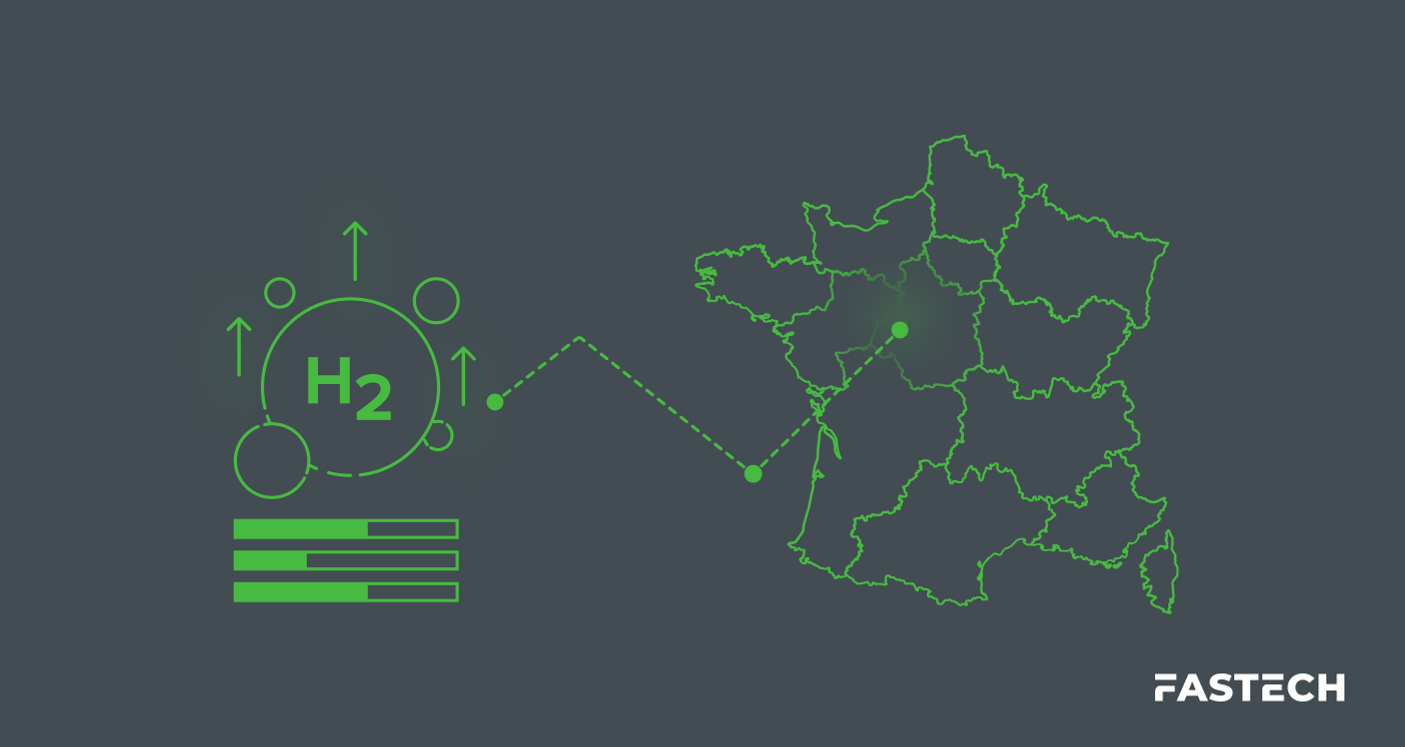Hydrogen Fuel Cell Vehicles: The Future Has Arrived

Hydrogen fuel cell vehicles might sound like a far-off, futuristic innovation, but they actually predate gasoline-powered cars. The first internal combustion engine—designed in 1806—was powered by a mix of hydrogen and oxygen.
After taking a long-time backseat to gas-powered cars, hydrogen fuel cell vehicles are making a comeback as the world seeks sustainable solutions to the climate crisis. But what exactly are fuel cell vehicles?
In this guide, we’ll explore the basics of fuel cell electric vehicles (FCEVs), how they work, their benefits for consumers and the energy industry, and the current options available on the market.
What’s a Fuel Cell Electric Vehicle (FCEV)?
A fuel cell electric vehicle combines the best parts of two automotive innovations:
- The internal combustion engine, which uses a fuel source to power the wheels and produce electricity
- The electric vehicle, which utilizes a rechargeable battery to propel the car forward but doesn’t generate electricity on its own
In an FCEV, hydrogen gas—stored in a fuel tank, just like gas is stored in traditional vehicles—is converted to electricity that powers and propels the vehicle via a fuel cell.
Traditional gas-powered engines release heat and carbon dioxide (a greenhouse gas) as byproducts of combustion. But FCEVs only produce water, heat, and electricity (which is stored in a traditional battery).
While some commercial FCEVs are available for professional drivers and fleets, consumer FCEVs are growing in presence and popularity.
How Do FCEVs Work?
Understanding FCEV propulsion requires some chemistry knowledge, but it’s a simple and safe process:
- Hydrogen gas travels to a fuel cell featuring an anode, a cathode, and an electrolyte membrane sandwiched between them.
- As hydrogen molecules (H2) are introduced to the negative anode, the negative charge causes H2 to split into its component ions, 2H+.
- H+ ions only consist of one proton and—to stabilize their positive charge—naturally migrate toward negative ions. Oxygen ions (O-) from the air are introduced to the cathode, and H+ ions move across the electrolyte membrane to bind to O- ions, producing water (H2O).
- The free electrons that separate from H2 as the molecules divide into ions travel through a circuit, creating an electric charge that powers the vehicles’ wheels.
FCEV Specs
How does an FCEV compare to a traditional car?
- Driving range: On average, gas-powered vehicles can travel 300 miles on a full gas tank. Current FCEV vehicles offer 330- to 400-mile ranges.
- Emissions: FCEVs don’t emit any greenhouse gasses (like carbon dioxide)—their only propulsion byproducts are heat, electricity, and water.
- Availability: While alternatively-fuelled vehicles—hybrids and electric cars included—are increasing in availability, FCEVs are still relatively rare.
- Fuel prices: H2 is measured in kilograms (kg), and current prices are in the $16/kg range. But the most recent Hyundai Nexo model (one of the few FCEVs on the market) can only hold around 6kg of fuel. And, as FCEVs become more common, increased H2 fuel availability will gradually lead to price decreases.
Benefits of FCEVs
FCEVs provide advantages to both individual consumers and the energy industry at large. Consumer benefits include:
- A reduced carbon footprint
- Practical similarities to traditional vehicles, including comparable:
- Fueling times
- Distance ranges
- Mechanical components
- State tax rebates offered to low-emissions vehicle drivers
- Free fuel credits offered by FCEV dealers
But the US energy sector also stands to benefit from FCEV growth:
- Increased availability and production of H2 gas diversify available energy sources
- Widespread FCEV adoption encourages continued green energy innovations
- Hybrids, electric cars, and FCEVs all speed up the timeline for decarbonization
Most importantly, the widespread use of FCEVs would help us make significant strides toward climate change mitigation. While changing the landscape of personal vehicle fueling isn’t the world's only sustainability task, progress in the sector could protect the earth for generations to come.
FCEVs Currently Available
Two consumer FCEVs are currently available—the Hyundai Nexo (a midsize SUV) and the Toyota Mirai (a four-door sedan).
It’s important to note that the models are only offered in two states. While Toyota dealers in California and Hawaii offer the Mirai, you can only purchase a Nexo from California-based Hyundai dealerships.
The Mirai features:
- Three trim packages—the LE, the Limited, and the XLE
- An average combined mi/kg of 70
- A 311V lithium-ion battery
- An average range of 363 miles
The Nexo offers:
- Two trim packages—the Nexo and the Nexo Blue
- An average combined mi/kg of 58
- A 240V lithium-ion battery
- An average range of 367 miles
Check out our green hydrogen refueling station project for Servco in Honolulu, Hawaii featuring the Toyota Mirai.
FASTECH: Alternative Energy Experts
Hydrogen fuel cell cars have so much to offer. They’re comparable to traditional gas vehicles, are growing in popularity, and present a significant opportunity to decrease tailpipe emissions from consumer cars.
You can contribute to the growing availability of hydrogen fuel—and, in turn, the presence of FCEVs. FASTECH can help you design, build, supply, and maintain a hydrogen refueling station or other green energy sources like CNG and LNG.
Our end-to-end renewable energy engineering, procurement, and construction (EPC) solutions are shaping the future of energy, and we can’t wait to bring you into the fold.
Contact us when you’re ready to kickstart your next renewable energy project.




